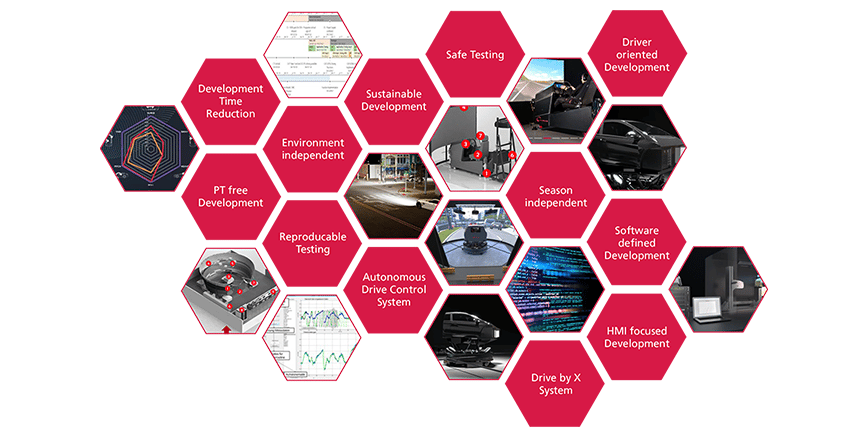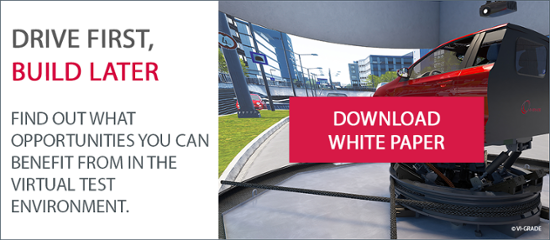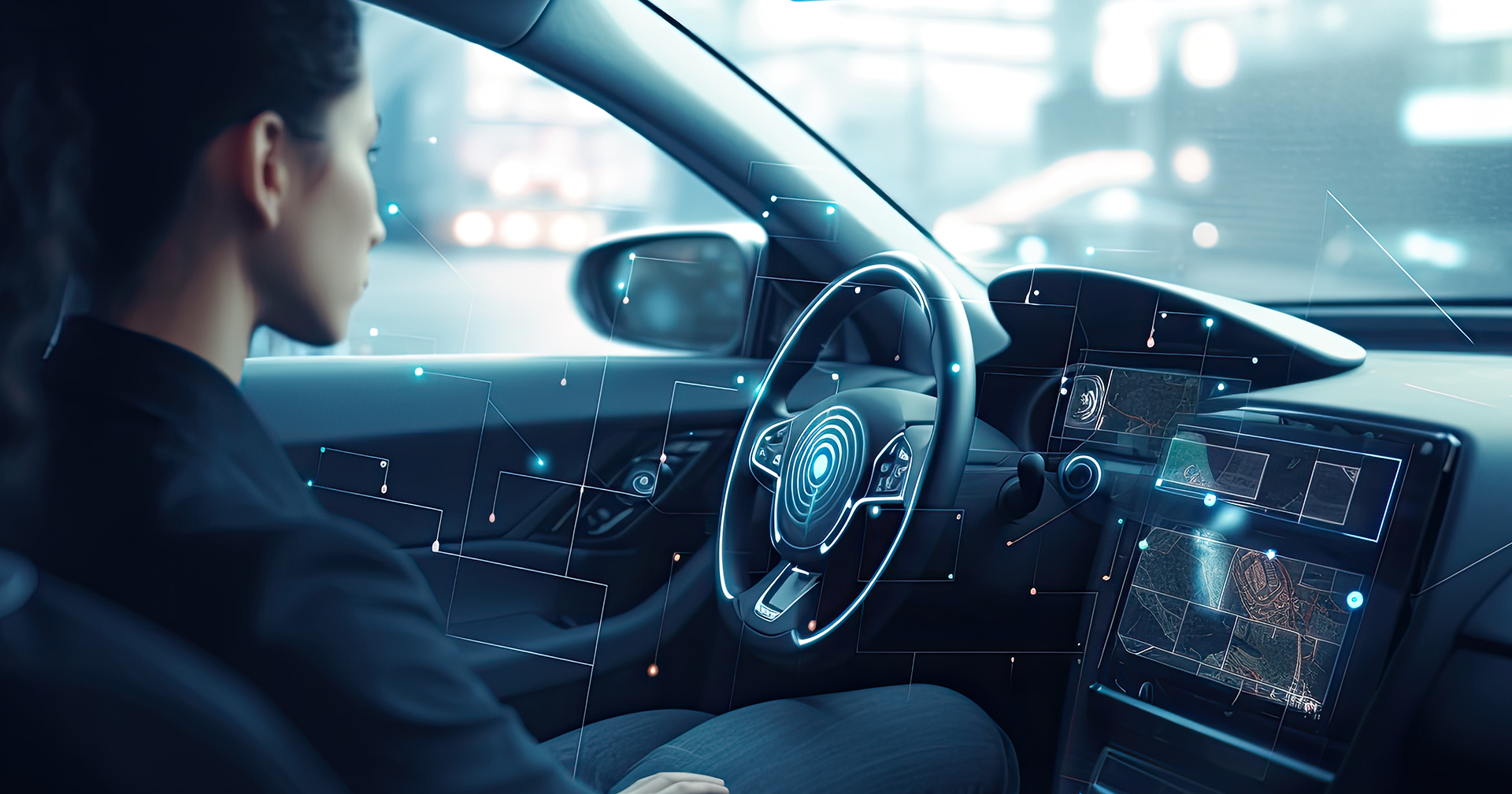The development of innovative technologies in the automotive industry is becoming increasingly complex. As numerous components and systems interact with each other, even a small change to a prototype can have a major impact on the functionality of the vehicle. This increases both the time-to-market and development costs. The EDAG team can offer its customers an alternative: the Zero Prototype Lab. High-quality simulation technology allows the digital implementation of any conceivable scenario. And this in turn promotes innovation - for everyday situations on the roads, in research or on the race track.
Modern vehicles feature increasingly complex systems - stand-alone steering or braking systems are a thing of the past. Networked architectures consisting of mechanical systems, electronics and software characterize the vehicles of the future. As these elements are often interlinked, increasing dependencies and interactions between systems and various functions are emerging. Test procedures for the development of functional prototypes are therefore becoming more intricate and complex. After every software or hardware modification, a new development version must undergo further testing under the same conditions.
For some time now, virtual test environments have been employed as an alternative. But until recently, the simulation technology in use was neither precise nor powerful. With this in mind, EDAG has developed a modern, state-of-the-art simulation center with the Zero Prototype Lab – the first simulation center of its kind. Its use makes physical tests on prototypes in the early stages of development a thing of the past. The simulators can be used to obtain more accurate results and make prompt adjustments.
More efficient development as a result of virtual test scenarios
Primarily, a physical prototype has an adverse effect on the early development process. Typical disadvantages include: High costs, heavy wear on prototypes and components, longer development periods and poor reproducibility.
One solution is to switch to digitalized scenarios and test drives throughout the entire development process. This significantly reduces the error rate and inaccuracies. The reason for this is that simulation allows the same test scenario to be run repeatedly under the required conditions – for example road surface, tire material or weather conditions. The wind force can be set to precisely the required intensity, and the same applies to simulating a snowy landscape. Test drives are therefore no longer dependent on specific seasons.
Cutting-edge simulation technology
Thanks to state-of-the-art technology, EDAG's Zero Prototype Lab provides the complete environment for virtual test runs. The EDAG experts perfectly adapt the simulators to the use cases concerned. Users can simply bring along their digital prototypes and start their test drive. Three specialized platforms are available to display different scenarios with different focal points – for hardware, software and HMI. The main focus here is on the interaction between driver and vehicle. This makes the test center the ideal starting point for OEMs, new OEMs, suppliers, researchers, tire manufacturers and motorsport teams.
At the heart of the laboratory is VI-grade's cable-operated DiM500 dynamic driving simulator. The carbon fiber cockpit allows 1:1 motion cueing, which gives the driver the opportunity to immerse him or herself in a virtual environment and enjoy a realistic driving experience. In addition, the EDAG Zero Prototype Lab features a VI-grade COMPACT Full Spectrum Simulator (FSS) and a hardware-in-the-loop platform with an AutoHawk real-time computer. This allows the driving simulators to be connected to existing and future hardware-in-the-loop test systems.
Diverse use cases
Every vehicle tested can be modified directly in the Zero Prototype Lab, regardless of whether this involves hardware components, software applications or interfaces between driver and vehicle. Users can check the performance of the front axle on different road surfaces, for example: How does the car behave with a certain tire in wet conditions? What effect do fluctuations in temperature have on vehicle dynamics? And can the driver react more effectively after a modification has been made?
The influence of all the virtual prototype's components can be seen immediately. The effects on handling, steering response and driving comfort, for example, can be recognized. The driver can give feedback on which modifications enhance or detract from the driving experience after each test. These test scenarios can be transferred to any conceivable application – from new winter tires to modern touchscreens or autonomous driving. This means that not only does the simulation center provide more precise and transparent results than physical test drives; it can also be used more flexibly. 
Conclusion
Interested OEMs, suppliers, research groups or racing teams can use the Zero Prototype Lab in Wolfsburg from May 2024 onwards. The EDAG experts will be on hand to provide advice on how to best integrate test scenarios into the simulators for the application concerned. The comprehensive collection of tools makes it possible to redefine the boundaries of engineering services on a global scale, transforming the vision of prototype-free development into reality.
If you would like to find out more about the possibilities of the virtual test environment, or have questions about the simulation technology used, please contact Jonas Grötzinger, Senior Technical Expert for Vehicle Motion at EDAG. Another useful reference point is our white paper "Innovative Simulation Center: Drive First, Build Later" at this LINK, in which we present the Zero Prototype Lab in more detail and discuss both the structure of the test center and possible fields of application. 





